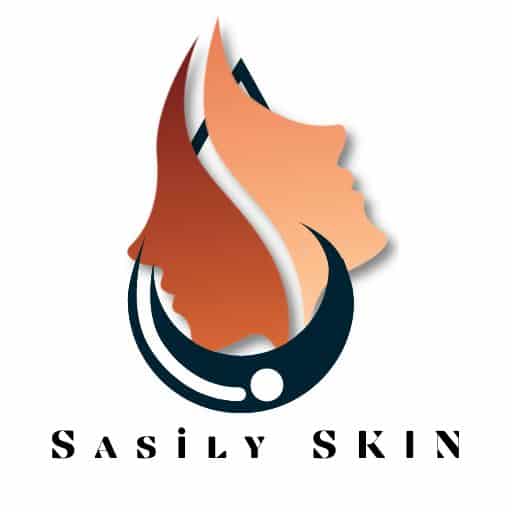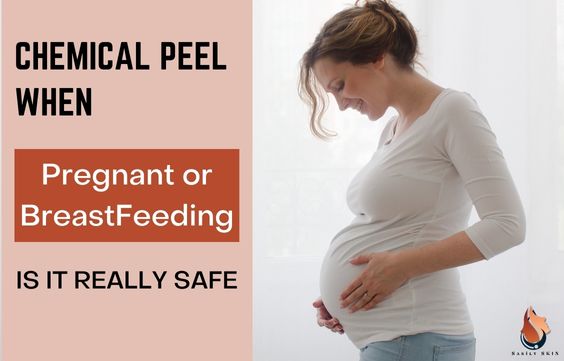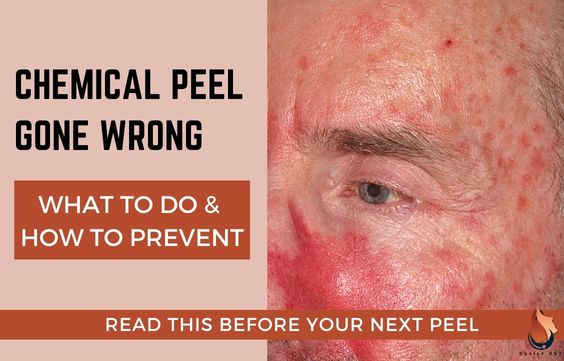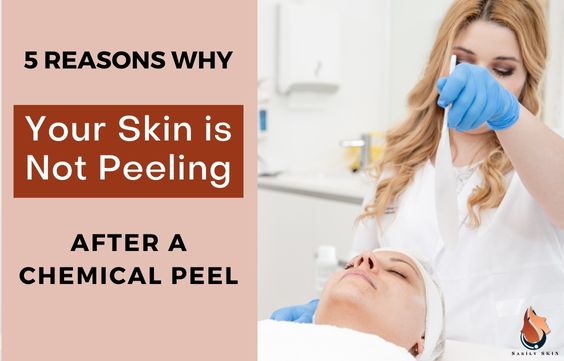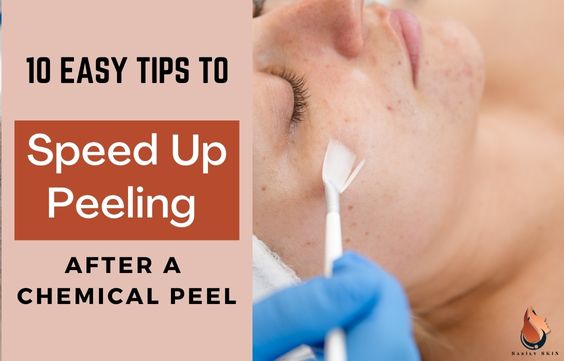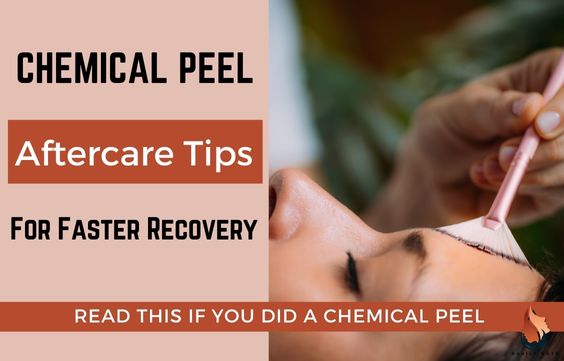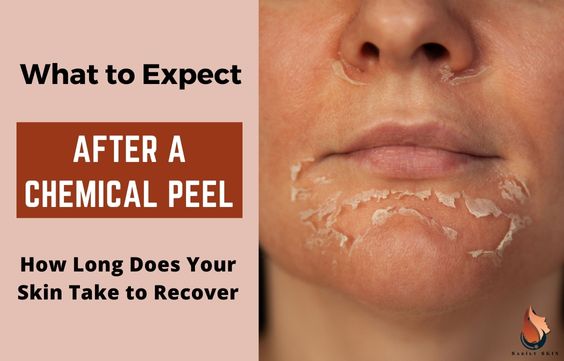Chemical Burns After Chemical Peel – How to Spot & Treat
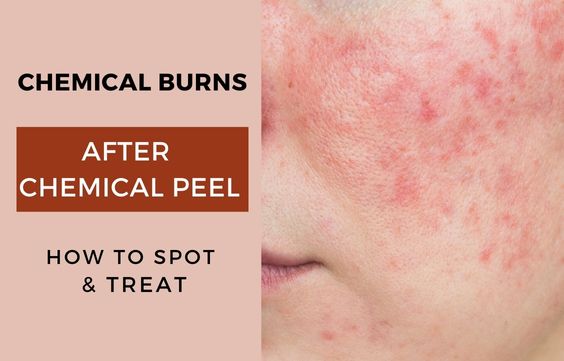
Chemical peels can be great for your skin if done correctly, and by trained professionals.
However, sometimes, chemical peels can result in unexpected complications like chemical burns when they are not properly done.
What are Chemical Burns
A chemical burn is the destruction of one or more layers of the skin which results in inflammation and irritation.
Chemical burns usually occur from direct contact with a chemical that is too strong for your skin or from exposure to its fumes.
Chemical burns usually occur from exposure to very strong acids or bases. Acids are chemicals with a pH ranging from 1 to 7 and bases are chemicals with a pH ranging from 7 to 14. Citation.
Can You get Chemical Burns from Chemical Peels
Chemical peels can cause chemical burns. This is because they use acids in different concentrations to exfoliate the skin which can lead to chemical burns.
They are different types of chemical peels:
- Superficial peels (light peels) which use specific acids in low concentrations that just target the uppermost layer of the skin.
- Medium peels that use stronger acids in higher concentrations that penetrate deeper into the skin for deeper exfoliations.
- Deep peels that penetrate down to the base layer of the skin which use the strongest acids that are approved for clinical dermatologic use.
How You Can Get Chemical Burns From Chemical Peels
You can get chemical burns from chemical peels:
- If the wrong kind of chemical is used
- If the concentration is too high for the skin
- If the area on which the peel is being done is excessively sensitive
- If the chemical is left on the skin for too long
Signs & Symptoms of a Chemical Burn
Generally, some things you might notice if you have a chemical burn will include:
- Redness, irritation, or burning at and/or around the area
- Pain or numbness at and/or around the area
- Formation of blisters or black, dead skin at the area
- Vision changes if the chemical gets into your eyes
- Coughing or shortness of breath if strong fumes are inhaled
- If the chemical was strong enough to have been absorbed into the body, if it was mistakenly ingested, or inhaled in large enough quantities, vomiting may occur. Citation.
Video Showing Chemical Burns From Chemical Peel
Treating Chemical Burns
Any chemical burn, especially on your face, is a pressing and valid reason to seek medical help.
Do not hesitate to call 911 or visit your local healthcare center or emergency department if you think you have a chemical burn. Even if you are not entirely sure how severe the injury might be. Chemical burns should be treated professionally.
First Aid for Chemical Burns
For any chemical burn, and even for the ones on your face from a chemical peel, there are things that you can do before medical help arrives.
If you receive a chemical peel in a clinic or office setting and you discover the burn afterward when you go home or after you have slept and woken up.
Then the first thing that you should do is call the professional who did your procedure so that they can advise you on how best to manage the situation until you can be professionally treated.
If you do a chemical peel at home (which is not recommended), and you sustain a chemical burn, here is what you can do:
- Call 911 or your doctor – they will most likely advise you on how to proceed
- Gently remove the chemical solution from your face with water and remove any clothing or other material that has been in contact with the chemical
- Spend at least 20 minutes washing the affected area with large quantities of water to dilute the chemical and make sure that any run-off does not get on other surfaces of your skin
- Ensure that the chemical or any of the water from washing does not get into your eyes, nostrils, or mouth
- Do not apply any other substances to your face until you have seen a medical professional and they can recommend something. Citation.
Medical Care for Chemical Burns
The medical treatment that you will receive for chemical burns will depend on the severity of the burn. You may need IV fluids and/or topical medications to help.
Do not attempt to medically treat chemical burns with OTC medication yourself. Also, in skincare, do not attempt to apply your other skincare products over the burn unless you have been cleared by your doctor. This may make the injury worse or lead to adverse reactions or infections.
Most chemical burns that are not severe usually resolve splendidly. Citation.
Tips for Caring for your Skin after a Chemical Burn
1- Do not continue to use active ingredients on your skin
One of the most important things to remember is that your skin is healing. Avoid using any skincare products with active ingredients like salicylic acid, glycolic acid (any acid), or retinol. These will likely further irritate your skin, especially if you have a chemical burn that is deeper than a first-degree burn.
2- Moisturize
One of the aims of healing is to repair your moisture barriers, which will promote healing. With the direction of your doctor, you may include things like hyaluronic acid, squalene, ceramides, and glycerin in your skincare routine.
3- Use soothing ingredients
When your face has been chemically burned, it becomes very inflamed and irritated. Using ingredients like allantoin, bisabolol, Centella Asiatica, aloe vera, and liquorice root extracts will calm the skin and maximize the healing process.
4- Sun protection
Your skin is already sensitive to the effects of the sun, but burnt skin is even more sensitive and will take much longer to heal if the sun can also attack it. Add a broad-spectrum sunscreen to your daily routine and never miss an application. Citation.
How to Prevent Chemical Burns from Chemical Peels
When doing a chemical peel, here are a few things to consider to avoid chemical burn injuries:
- Do not attempt to do chemical peels at home. If you are not sure what you should be using.
- If you are not familiar with acids and chemical peels, and if you have never had a chemical peel before, consult a professional before ever putting chemical peel solutions on your face.
- Consult your doctor/dermatologist about the current condition of your skin before doing a chemical peel.
- Keep up to date with your skin’s reaction to various procedures and treatments so that you can monitor and anticipate adverse or allergic reactions and sensitivity.
- Pay attention to the kind of chemical that you are using for your peel and make sure that you and your skincare specialist discuss its suitability for your skin.
- Always conduct patch tests.
- Ensure that you follow all of the instructions for care that you are given before and after your chemical peel.
- Always use sunscreen. Before your peel and even after your peel, sun protection is important for the health and resilience of your skin
Types of Chemical Burns that can Occur From Chemical Peels
Chemical burns, even on the face, are usually classified based on the depth of the effect – meaning, how many layers of your skin have been damaged.
Superficial or first-degree burns
These only affect the uppermost layer of the skin, called the epidermis. Usually, these chemical burns resolve with no permanent damage to the skin.
Partial-thickness or second-degree burns
These penetrate through the first layer and extend into the second layer of the skin, called the dermis. You may develop blisters in the area and scars may be left after healing.
Full-thickness or third-degree burns
These penetrate right through all of the layers of the skin and may even damage the nerves and blood vessels under the skin. The area of the burn may look very dark (sometimes even black) or very pale (sometimes almost white).
Many people do not feel pain because of the nerve damage, and healing leaves behind structural changes in the skin and deep scarring. Citation.
